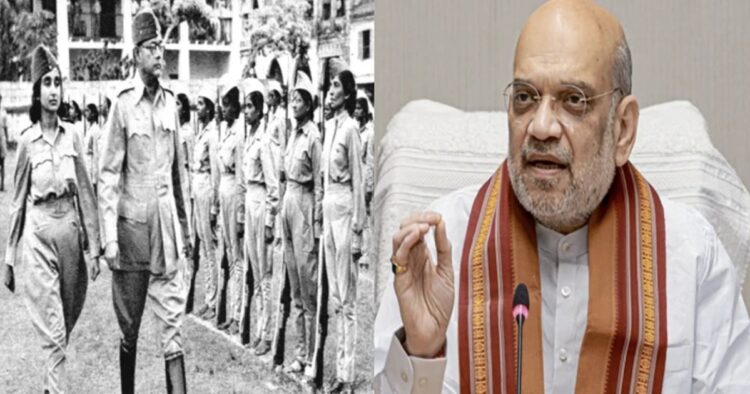In a heartfelt tribute, Union Home Minister Amit Shah commemorated the foundation day of the Azad Hind Fauj (Indian National Army, INA) on October 21, 2024. Posting on X, he recalled the significant historical moment when Netaji Subhas Chandra Bose, as the commander of the INA, announced the establishment of India’s first independent government in 1943. Home Minister Amit Shah emphasized that this bold proclamation, accompanied by the INA’s resolve to liberate India, became a decisive moment in the fight against British colonial rule.
In his message, Amit Shah wrote, ‘On this day in 1943, Netaji Subhas Chandra Bose, as the commander of the ‘Azad Hind Fauj’, announced the first independent government of India and celebrated this day as Independence Day. This historic step proved to be the last nail in the coffin of British rule’.
Amit Shah also saluted the soldiers of the Azad Hind Fauj, whose commitment to India’s freedom, marked by the inspiring slogan Delhi Chalo, galvanized the youth of the nation to unite against British tyranny. He concluded by honoring the brave freedom fighters on the foundation day of the INA, acknowledging their contribution to India’s struggle for independence.
The Azad Hind Fauj was officially formed on October 21, 1943, in Singapore under the leadership of Subhas Chandra Bose, who announced the creation of the provisional Government of Azad Hind (Free India). Bose assumed multiple roles within the government: Head of State, Prime Minister, and Minister of War, signalling his all-encompassing leadership in the fight for independence.
The INA’s primary goal was to secure India’s freedom from British rule through armed resistance. Bose’s leadership and the soldiers dedication were driven by the unshakeable belief in achieving Swaraj (self-rule) for their motherland.
The INA received backing from the Axis powers during World War II, including Imperial Japan, Nazi Germany, and the Italian Social Republic. This strategic alignment provided the INA with resources and military support, enabling them to launch their military campaigns against the British colonial forces.
Bose’s leadership remained central to the INA’s operations, guiding the soldiers with his vision of a free India. The INA established its headquarters in Rangoon (now Yangon, Myanmar) and Singapore, two significant strategic locations during the campaign. These bases became central points for planning and executing military actions against the British Empire in India.

















Comments